#NKPRWHW
Text

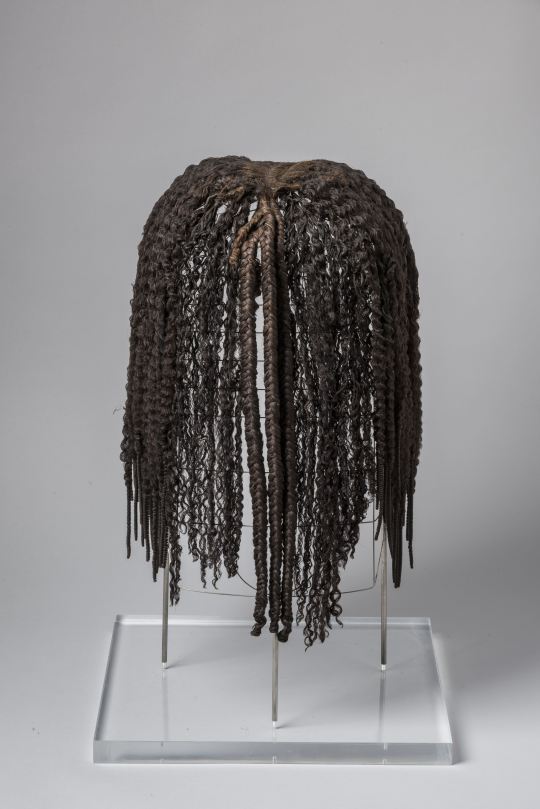



Merit’s wig - Museo Egizio Collection
Inventory Number: S. 8499
New Kingdom, Pre Ramesside, Dynasty 18. 1425–1353 BCE. Reign: Amenhotep II / Tuthmosis IV / Amenhotep III
Location Information: Deir el Medina / tomb of Kha (TT8)
Description:
Another exceptional artifact that belonged to Merit is her wig, made with real locks of hair that were sewn together and braided. The hair is parted in the middle and curled into ringlets that end with braids on either side of the face and on the back of the neck. This type of hairdo was often decorated with flowers and diadems, which were very fashionable in the mid-18th dynasty, as can be seen in the paintings and statues of the period.
#merit#new kingdom#new kingdom pr#S. 8499#museo egizio#deir el medina#tomb of kha#womens hair and wigs#NKPRWHW#upper egypt#wig#merits wig
70 notes
·
View notes
Text
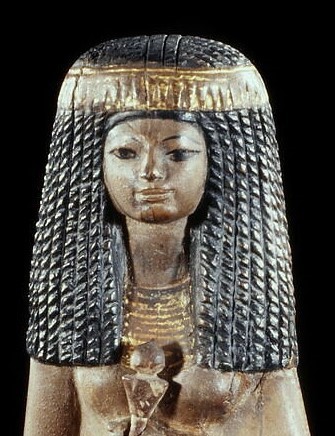
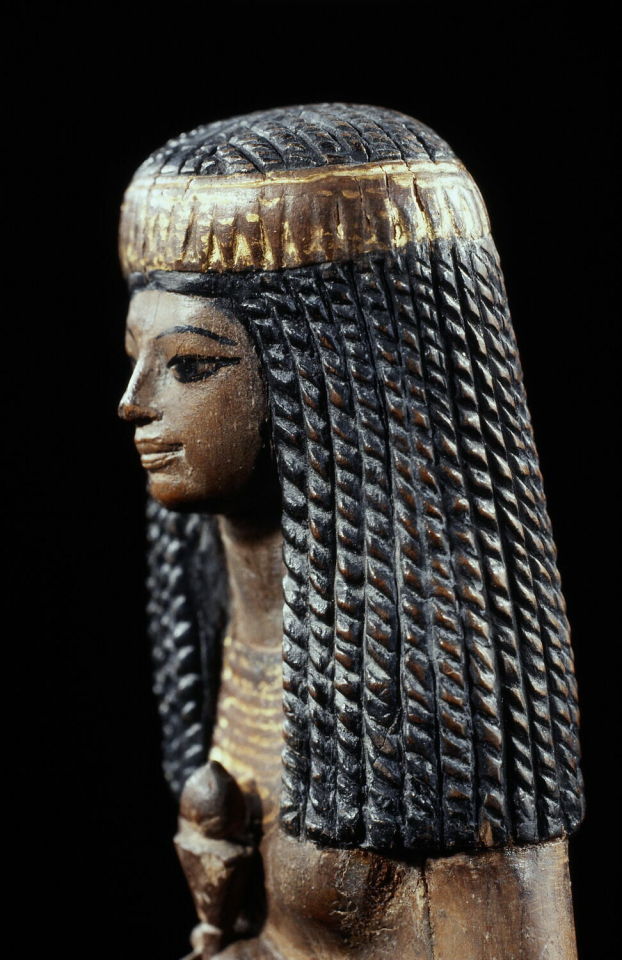
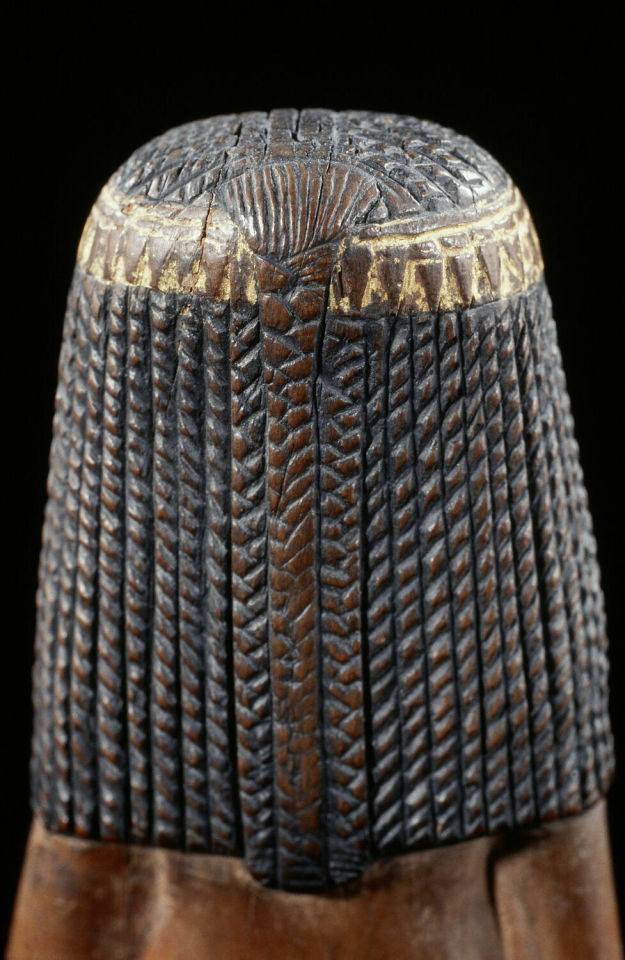

Statue - Louvre Collection
Inventory Number: N 871
New Kingdom, Pre Ramesside, Amenhotep III (-1390 - -1352)
Location Information: Saqqara (Memphite region->Memphite necropolis) (?)
Description:
woman (standing, dress, ousekh necklace, wrapping wig, bracelet, tiara)
Names and Titles: Nay (housemistress); Ptahmay (servant-sédjem-âch, brother); Ptah-Sokar-Osiris
#New Kingdom#new kingdom pr#saqqara#memphite region#memphite necropolis#dynasty 18#womens hair and wigs#NKPRWHW#louvre#N 871#statue#Nay#Ptahmay#lower egypt
2 notes
·
View notes
Text

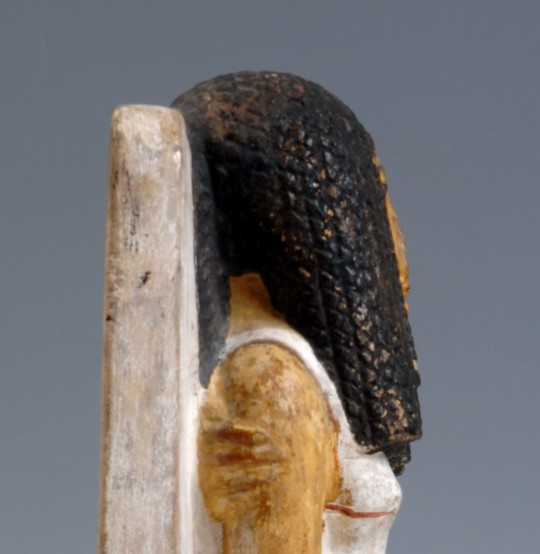
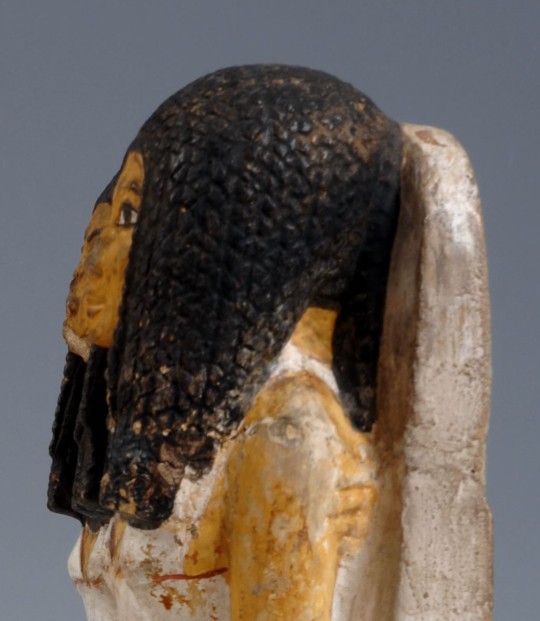
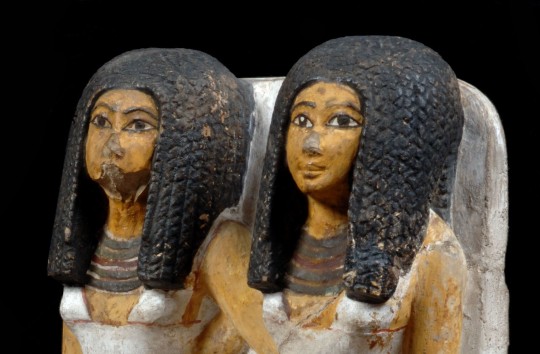
Statue of Idet and Ruiu - Museo Egizio Collection
Inventory Number: Cat. 3056
New Kingdom, Dynasty 18, 1480–1390 BCE
Location Information: Theban necropolis
Description:
The kinship relation between the two women, if any, is not specified. The sculpture seems to place more importance on Idu, as she is seated on the right, the place of honor, and is called “lady of the house” (nebet per), while no title is given for Ruiu. On the right of the seat is an offering formula “to Osiris… lord of eternity, that he may give… every good and pure thing, and the pleasant breeze of the north wind, to the ka ('soul') of the lady of the house Idet, justified”; the formula is repeated for Ruiu, with several variations, on the opposite side.
#Statue of Idet and Ruiu#museo egizio#Cat. 3056#new kingdom#new kingdom pr#dynasty 18#theban necropolis#upper egypt#womens hair and wigs#NKPRWHW
1 note
·
View note
Text


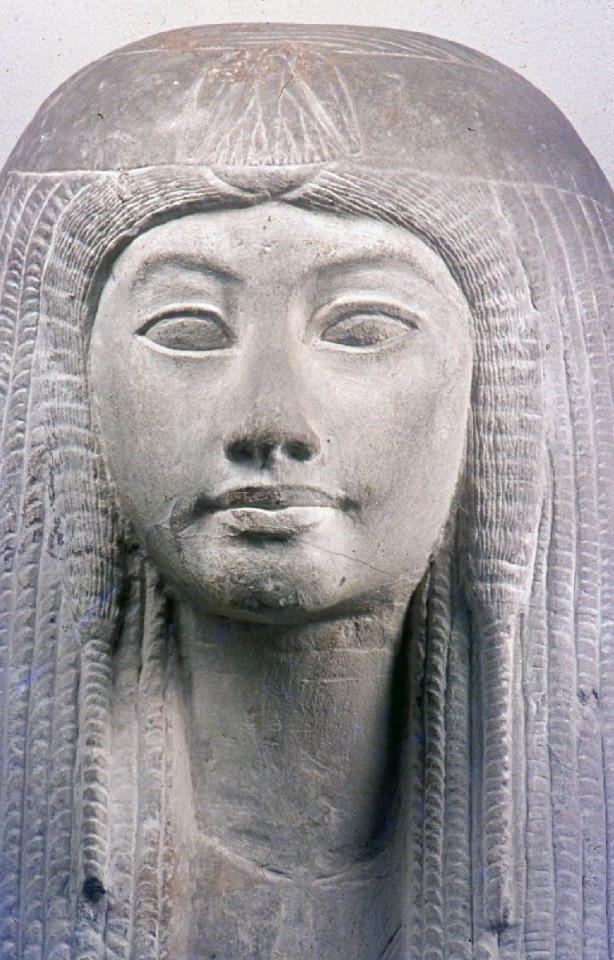
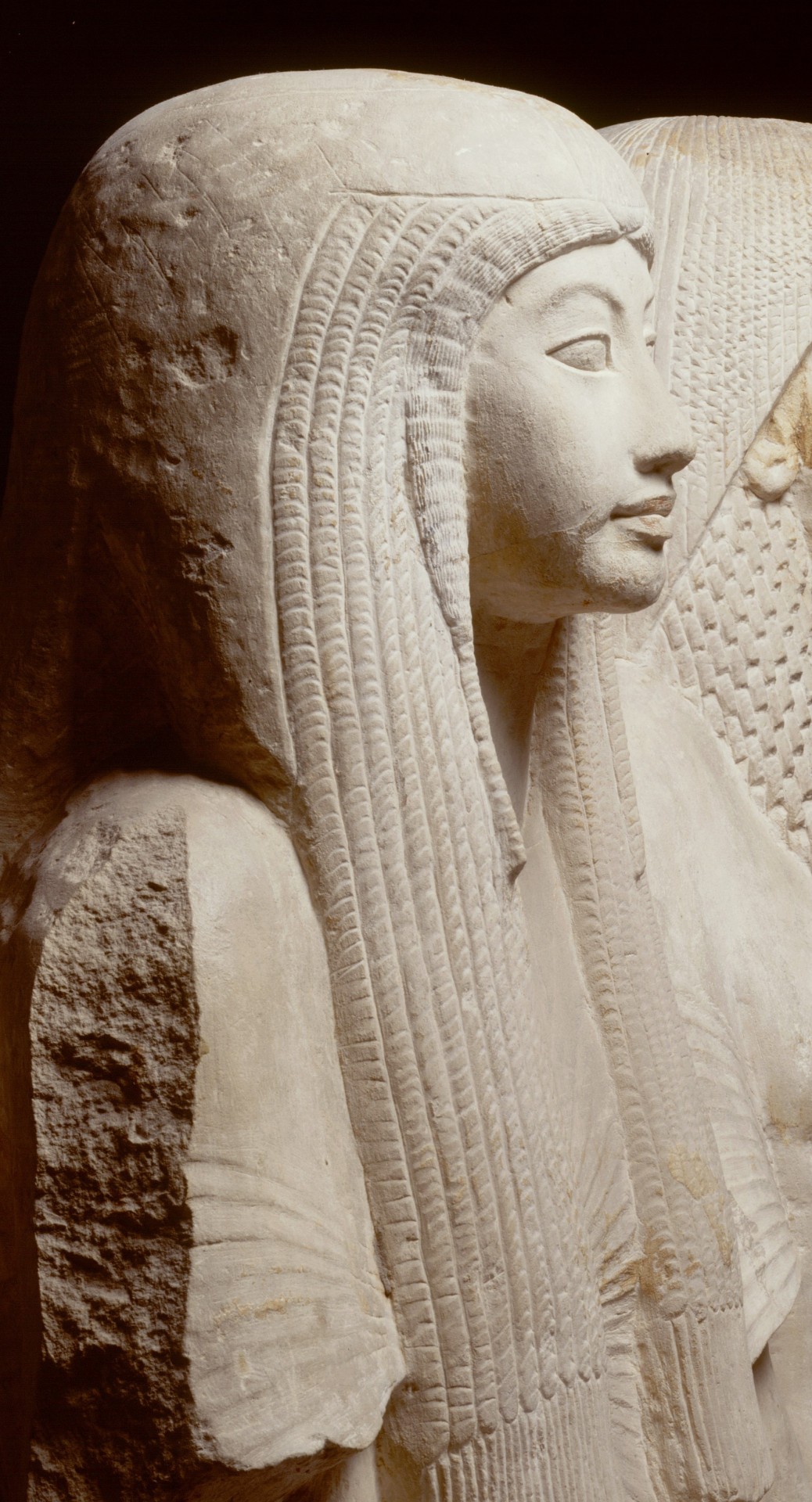
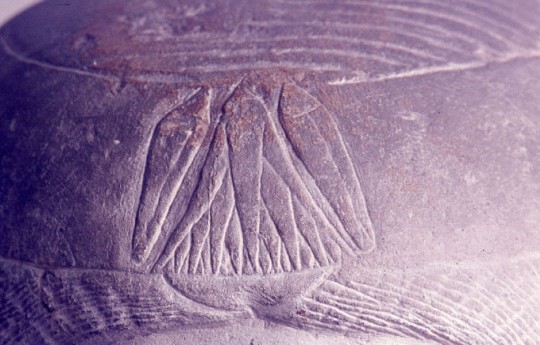
Double Seating Image of Maya and Merit - Rijksmuseum Von Oudheden Collection
Photo Focus: Merit
Inventory Number: AST 3
New Kingdom, Dynasty 18, ca. 1319 BC.
Location Information: Egypt, Saqqara, tomb of Maya
Description:
Maya was one of the great men in the Egypt of Tutankhamun and Horemheb, but his career may have started earlier: during the reign of the famous pharaoh Akhenaten. Under Tutankhamun and Horemheb he was a kind of minister of finance and was in charge of all major construction projects in the country. The construction and maintenance of the important cemeteries also fell under his responsibility, especially those of the pharaohs in the Valley of the Kings.
Additional Image Source: Maya and Merit, Rob Koopman @ Fl
#Double Seating Image of Maya and Merit#rijksmuseum von oudheden#AST 3#new kingdom#new kingdom pr#dynasty 18#lower egypt#saqqara#tomb of maya#womens hair and wigs#NKPRWHW
1 note
·
View note
Text


Head of a Queen Wearing a Vulture Headdress - Met Museum Collection
Inventory Number: 2021.41.86
New Kingdom, Early Dynasty 18, ca. 1550–1479 B.C.
Location Information: Location Unlisted
Description:
This serene looking queen’s rank is identified by the vulture headdress she wears, although its head now missing. Her delicate features and slightly elongated head indicate that she must date before the Tuthmoside period, but parallels are scarce. It is difficult to identify where in the prior one hundred or so years before that family’s rule begins she belongs. Given the damage to the back of the statue, the queen seems to have been attached to another element now missing.
#Head of a Queen Wearing a Vulture Headdress#new kingdom#new kingdom pr#dynasty 18#early dynasty 18#location unlisted#met museum#2021.41.86#womens hair and wigs#NKPRWHW
1 note
·
View note
Text


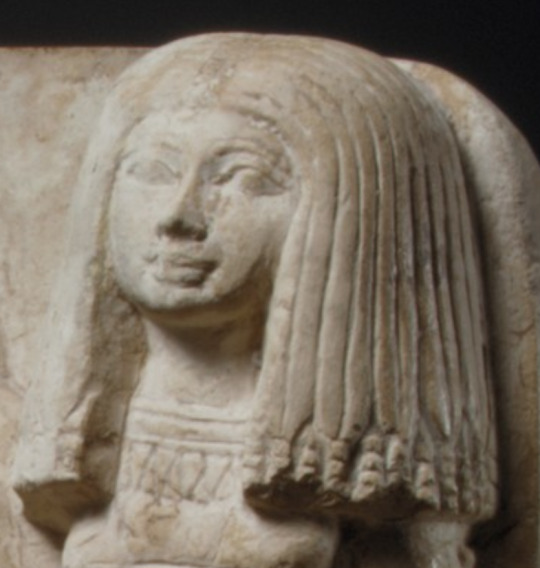
Statue of Kedamun and His Family - Met Museum Collection
Inventory Number: 25.184.8
New Kingdom, Dynasty 18, ca. 1550–1295 B.C.
Location Information: Probably from Upper Egypt, Thebes; From Egypt
#Statue of Kedamun and His Family#new kingdom#new kingdom pr#dynasty 18#upper egypt#thebes#met museum#25.184.8#womens hair and wigs#NKPRWHW
0 notes
Text
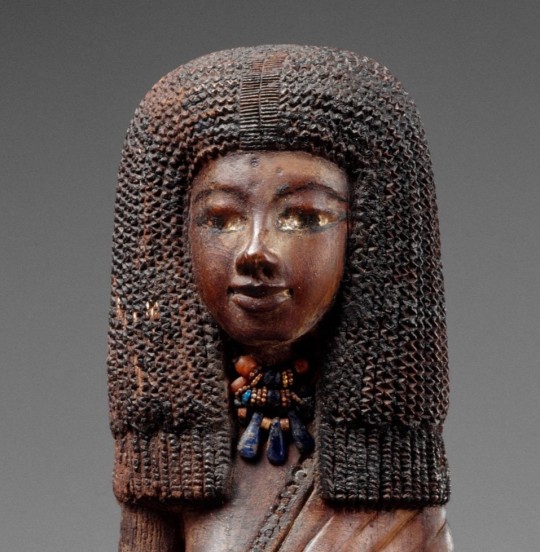


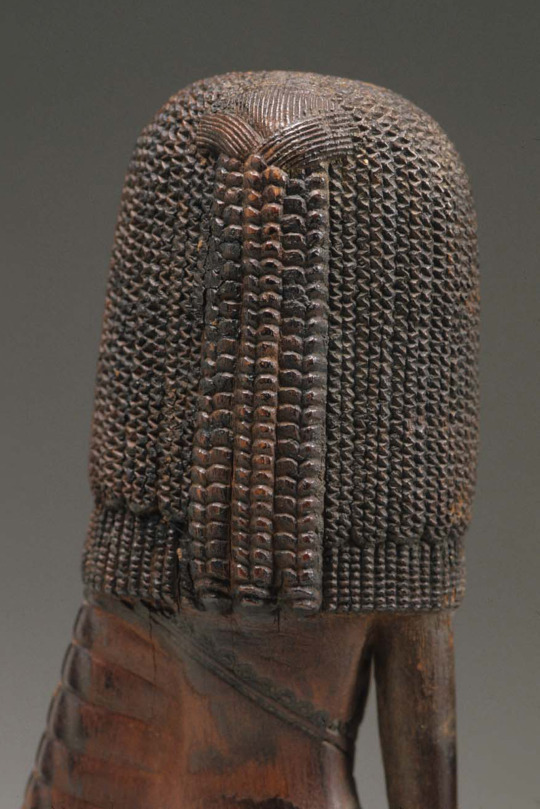
Statuette of the Lady Tiye - Met Museum Collection
Inventory Number: 41.2.10a
New Kingdom, Dynasty 18, ca. 1390–1349 B.C.
Location Information: Location Unlisted
Description:
The "mistress of the harim Tiye" wears the voluminous wig and clinging dress of her time. Her necklace is made of gold, semi-precious stones and glass.
Images sourced from Wikimedia Commons:
Front View | Angle View | Side View | Back View
#statuette of the lady tiye#lady tiye#new kingdom#new kingdom pr#dynasty 18#location unlisted#met museum#41.2.10a#womens hair and wigs#NKPRWHW
0 notes
Text
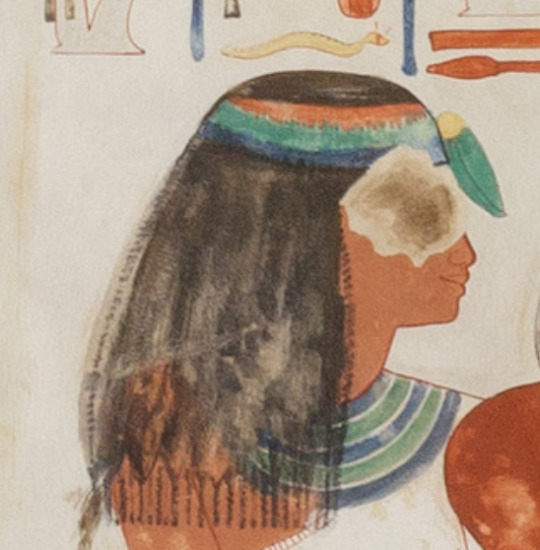
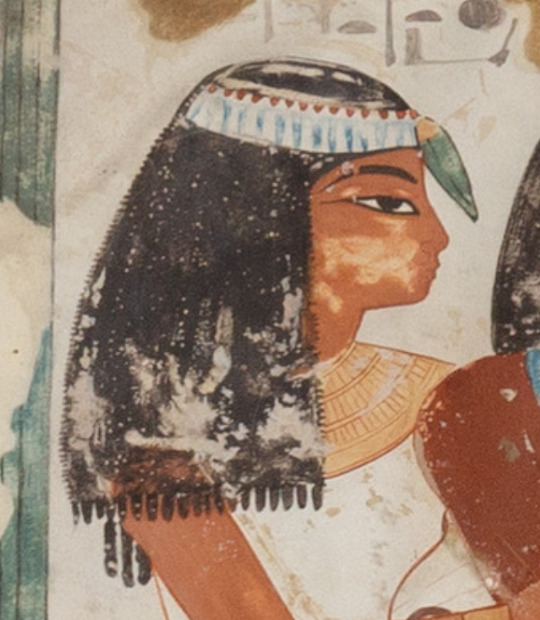
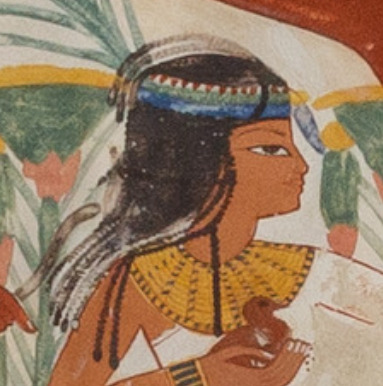
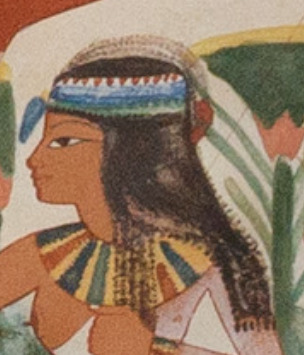

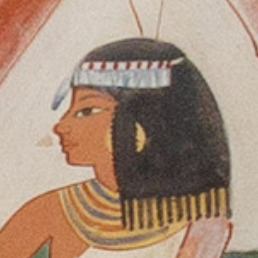
North Side of the West Wall of Nakht's Offering Chapel - Met Museum Collection
Note: This is a modern copy of an original
Inventory Number: 15.5.19e, l–m
Original Dating: New Kingdom, Dynasty 18, ca. 1410–1370 B.C.
Location Information: From Egypt, Upper Egypt, Thebes, Sheikh Abd el-Qurna, Tomb of Nakht (TT 52), chapel, west wall, north side [PM (6)], MMA Graphic Section, 1907–1914
More Information on the scenes available via osiris.net
#North Side of the West Wall of Nakht's Offering Chapel#upper egypt#thebes#sheikh abd el qurna#sheikh abd el-qurna#tomb of nakht#new kingdom#new kingdom pr#dynasty 18#met museum#15.5.19e#womens hair and wigs#NKPRWHW
0 notes
Text
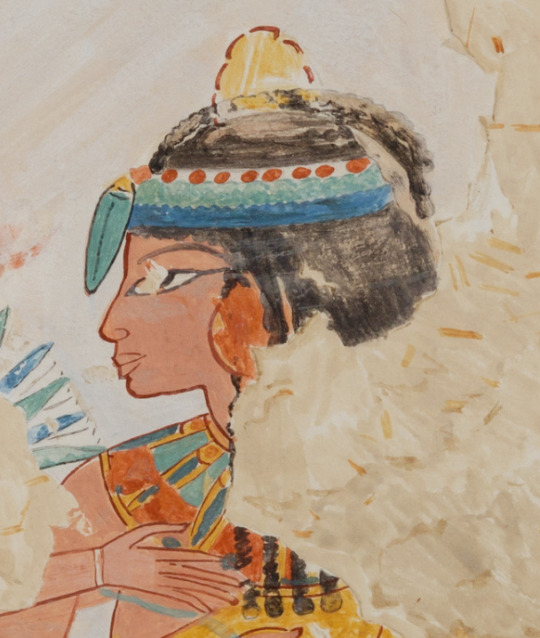
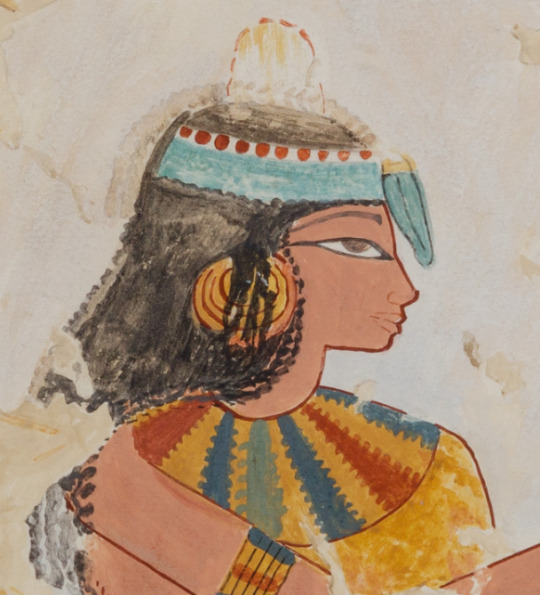


Women at a Banquet - Met Museum Collection
Note: This is a modern copy of an original
Inventory Number: 30.4.92
Original Dating: New Kingdom, Dynasty 18, ca. 1400–1390 B.C.
Location Information: Original from Egypt, Upper Egypt, Thebes, Sheikh Abd el-Qurna, Tomb of Nebseny (TT 108), MMA Graphic Section, 1922
Description:
This detail of a banquet scene shows a female guest offering another guest a yellow mandrake fruit, which the ancient Egyptians associated with love and sexuality. The fruit has a pleasing smell when ripe, while the mandrake plant itself has hallucinogenic and aphrodisiac effects but is toxic. Several lotus flowers are also depicted. Each headband features a lotus bud, and two guests hold a lotus flower; one is open (though partially destroyed), and another is closed. The lotus flower, which also has a pleasing scent, was a symbol for regeneration and rebirth because its petals open and close every day. Additionally, the Nymphaea species of lotus has narcotic properties and may have been used to achieve an altered state.
#women at a banquet#new kingdom#new kingdom pr#dynasty 18#upper egypt#thebes#sheikh abd el qurna#sheikh abd el-qurna#tomb of nebseny#met museum#30.4.92#womens hair and wigs#NKPRWHW
0 notes
Text
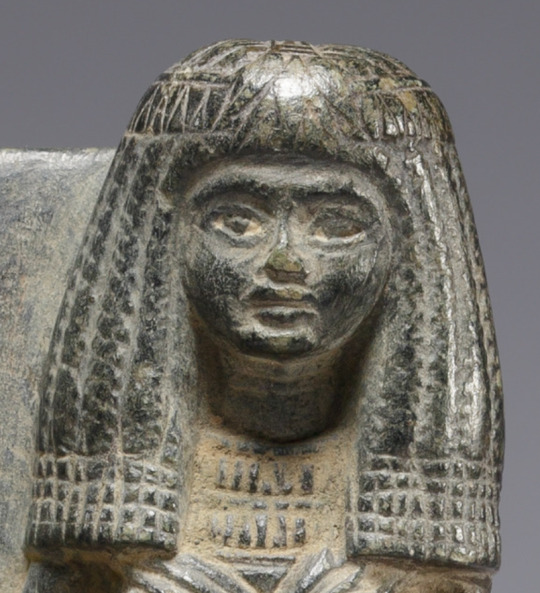
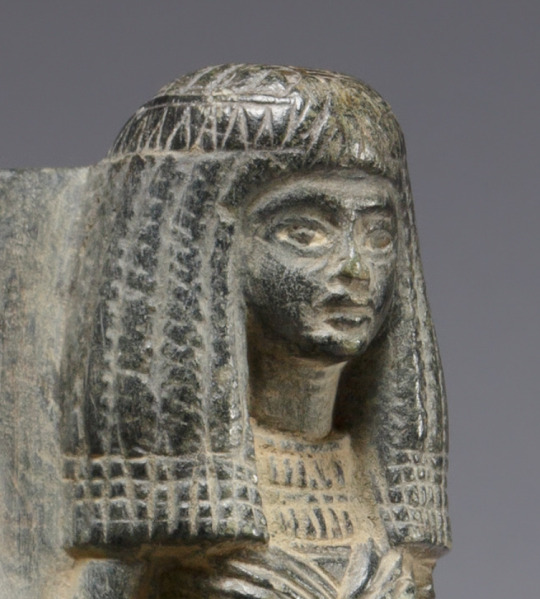

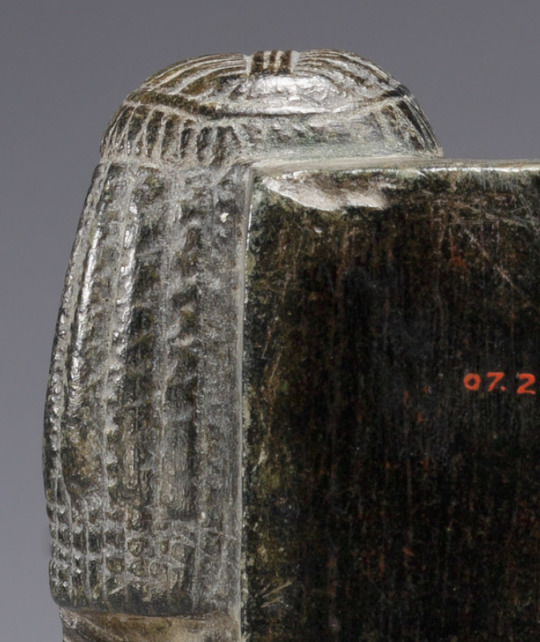
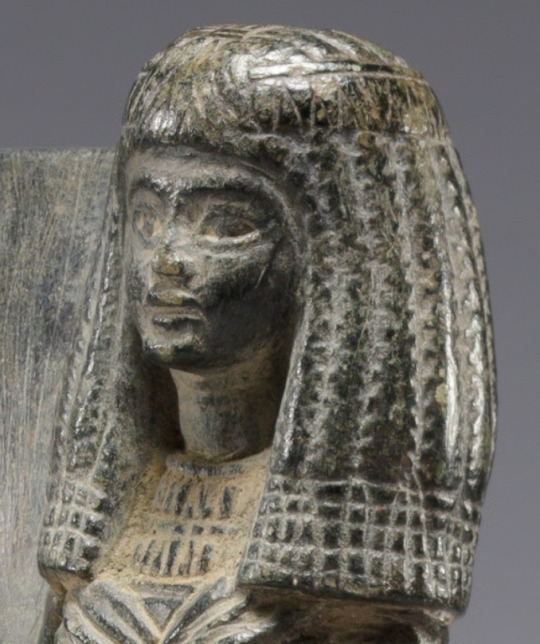
Seated Pair Statuette - Met Museum Collection
Inventory Number: 07.228.94
New Kingdom, Dynasty 18–19, ca. 1336–1250 B.C.
Location Information: Location Unlisted
Description:
This statuette depicts a man and a woman sitting side by side, supporting each other's back with their arms. The man is dressed in a modishly long tunic under a fringed sash-kilt and the woman wears a fashionable wrap-around dress knotted just below her breasts. Their stools are represented in almost as great detail as their clothing and coiffures. The seat of the man's stool is woven and its legs enclose a lattice bracing. The woman sits on a different stool with flared legs, as often appears in seated pair statues of this period. Such statues were usually placed in a niche at the tomb or at a chapel.
#Seated Pair Statuette#new kingdom#new kingdom pr#dynasty 18#dynasty 19#location unlisted#met museum#07.228.94#womens hair and wigs#NKPRWHW
0 notes
Text

Qenamun and His Wife, Tomb of Qenamun - Met Museum Collection
Note: This is a modern copy of an original
Inventory Number: 30.4.192
Original Dating: New Kingdom, Dynasty 18, ca. 1390–1352 B.C.
Location Information: From Egypt, Upper Egypt, Thebes
#Qenamun and His Wife#Tomb of Qenamun#new kingdom#new kingdom pr#dynasty 18#upper egypt#thebes#met museum#30.4.192#womens hair and wigs#NKPRWHW
0 notes
Text
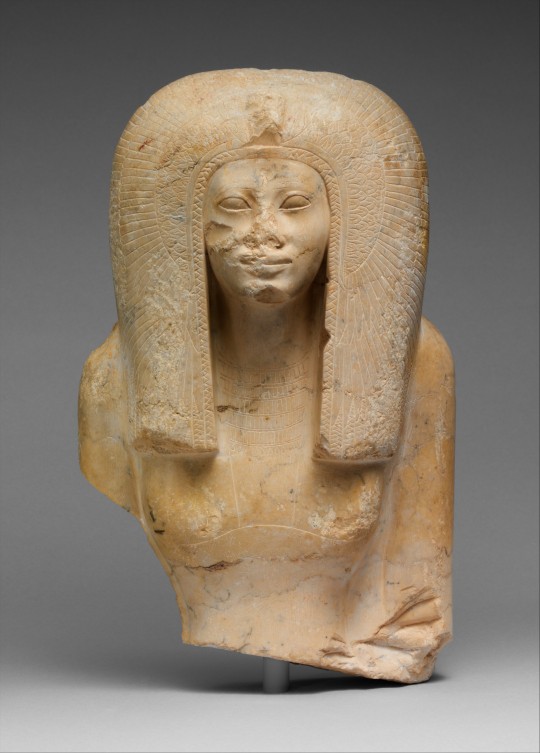
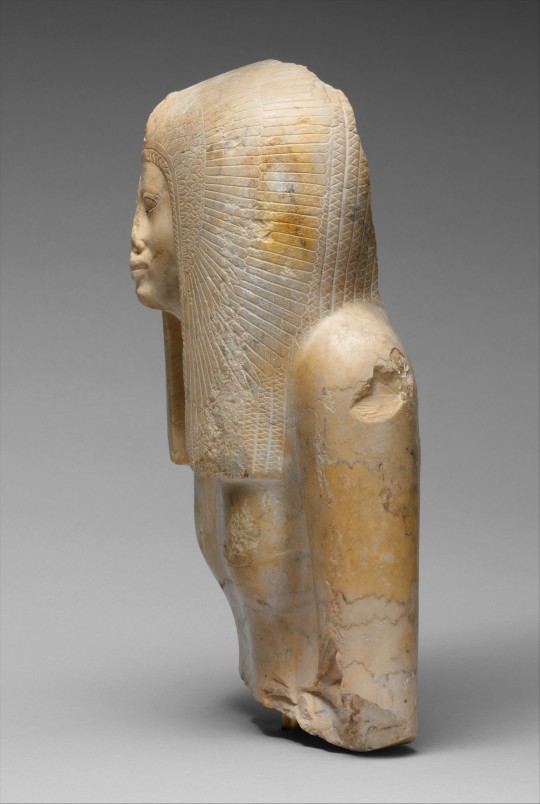
Upper Part of the Seated Statue of a Queen - Met Museum Collection
Inventory Number: 16.10.224
New Kingdom, Late Dynasty 17–Early Dynasty 18, ca. 1580–1550 B.C.
Location Information: From Egypt, Upper Egypt, Thebes, Asasif, Courtyard CC 41, radim, MMA excavations, 1915–16
Description:
This image of a queen wearing the vulture headdress over a voluminous tripartite wig was split off its backslab in antiquity, most probably by somebody who wanted to make use of this conveniently shaped piece of stone for other purposes.
The sculpture has been identified tentatively as Queen Ahmes Nefertari, mother of Amenhotep I, and dated to the reign of Ahmose (ca. 1550-1525 B.C.) at the very beginning of the 18th Dynasty. However, the remarkable flatness of the face and wig is familiar from certain works created during the 17th Dynasty (compare the seated statue of Siamun, 65.115), and the intriguing interplay of fleshy musculature in the lower part of the face is even reminiscent of late Middle Kingdom images. This combination of stylistic traits is best understood in the context of the excitingly multifaceted artistic period between the end of the Middle and the beginning of the New Kingdom.
#Upper Part of the Seated Statue of a Queen#new kingdom#new kingdom pr#dynasty 17#dynasty 18#early dynasty 18#upper egypt#thebes#asasif#met museum#16.10.224#womens hair and wigs#NKPRWHW
1 note
·
View note
Text
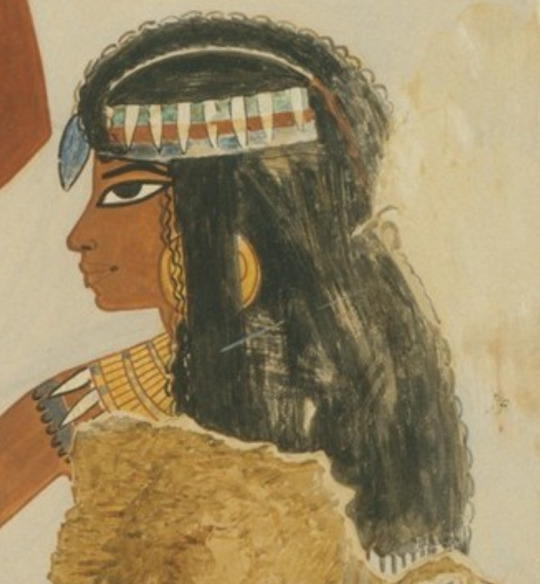
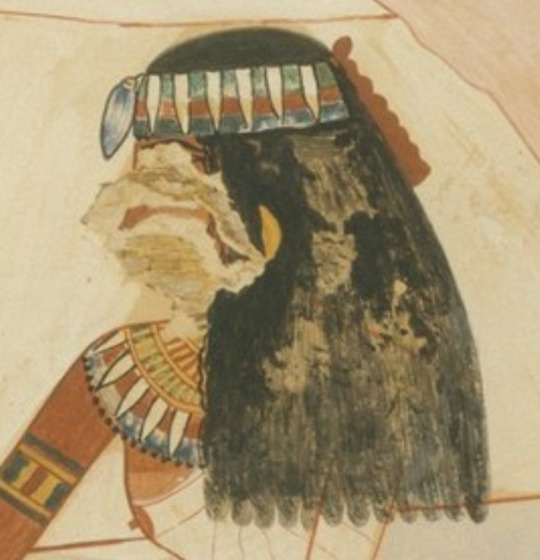
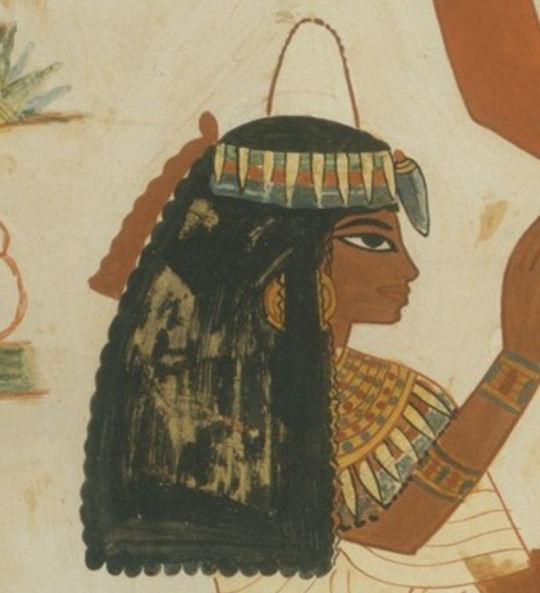

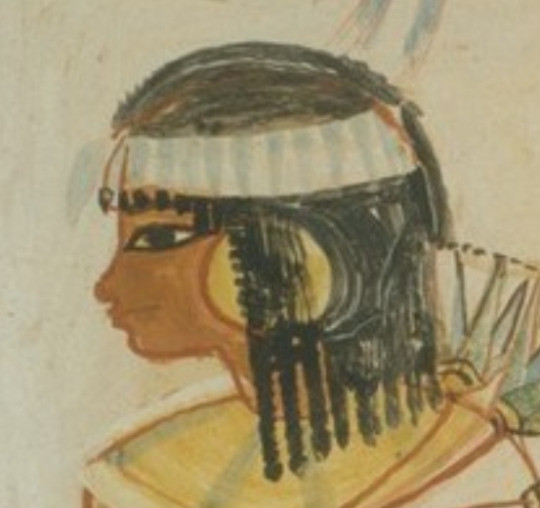
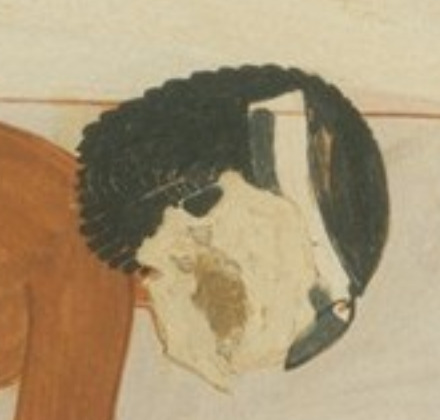
Menna and Family Hunting in the Marshes, Tomb of Menna - Met Museum Collection
Note: This is a modern copy of an original
Inventory Number: 30.4.48
Original Dating: New Kingdom, Dynasty 18, ca. 1400–1352 B.C.
Location Information: Original from Egypt, Upper Egypt, Thebes, Sheikh Abd el-Qurna, Tomb of Menna (TT 69), north wall
Description:
Copied from an original executed in painted plaster on the north wall of Menna's tomb chapel, this facsimile depicts the tomb owner fishing and fowling in the papyrus marshes. To viewer left, Menna holds decoy birds in one hand and raises a throwstick above his head with the other. On the right, he uses a long spear to catch two large fish, most likely Tilapia. In both vignettes, he is poised on the deck of a papyrus skiff, into which members of his family (unnamed here, but probably his wife and several of his children) have crowded.
#Menna and Family Hunting in the Marshes#tomb of menna#upper egypt#thebes#Sheikh Abd el-Qurna#Sheikh Abd el Qurna#new kingdom#new kingdom pr#dynasty 18#womens hair and wigs#NKPRWHW#30.4.48#met museum
0 notes
Text
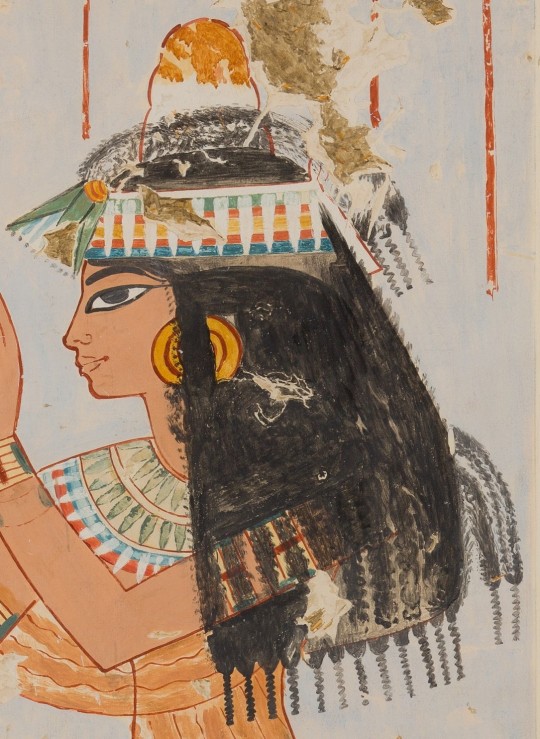
Menna's Daughter Offering to her Parents, Tomb of Menna - Met Museum Collection
Note: This is a modern reproduction of an original
Inventory Number: 30.4.46
Original Dating: New Kingdom, Dynasty 18, ca. 1400–1352 B.C.
Location Information: From Egypt, Upper Egypt, Thebes
#Menna's Daughter Offering to her Parents#tomb of menna#new kingdom#new kingdom pr#dynasty 18#upper egypt#thebes#met museum#30.4.46#womens hair and wigs#NKPRWHW
0 notes
Text
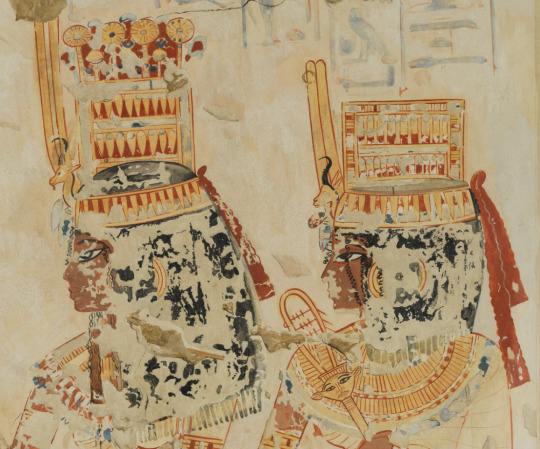


Two Daughters of Menna, Tomb of Menna - Met Museum Collection
Note: This is a modern reproduction of an original
Inventory Number: 30.4.194
Original Dating: New Kingdom, Dynasty 18, ca. 1400–1352 B.C.
Location Information: From Egypt, Upper Egypt, Thebes
#Two Daughters of Menna#Tomb of Menna#new kingdom#new kingdom pr#dynasty 18#upper egypt#thebes#met museum#30.4.194#NKPRWHW#NKPRH#womens hair and wigs#hats
0 notes
Text
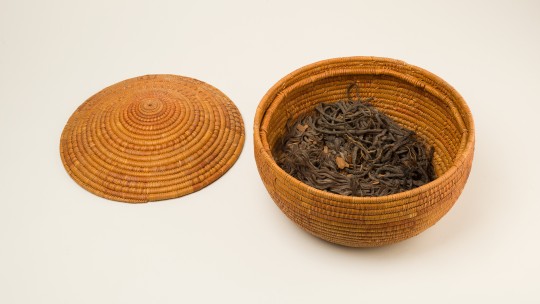
Bundle of Hair Extensions - Met Museum Collection
Inventory Number: 36.3.196
New Kingdom, Dynasty 18, ca. 1492–1473 B.C.
Location Information: From Egypt, Upper Egypt, Thebes, Sheikh Abd el-Qurna, below the Tomb of Senenmut (TT 71), burial 2, in basket, MMA excavations, 1935–36
Description:
A basket (36.3.189a, b) with toiletry equipment was found next to the coffin (36.3.184) of an elderly woman. Among other items, the basket contained four bundles of hair extensions (36.3.191–.193, .196) and two braids of hair and linen (36.3.194–.195), as well as an alabaster kohl jar with its ebony stick (36.3.190a–c) and a small wooden box (36.3.199).
#Bundle of Hair Extensions#Hair Extensions#new kingdom#new kingdom pr#dynasty 18#upper egypt#thebes#Sheikh Abd el-Qurna#Sheikh Abd el Qurna#Tomb of Senenmut#met museum#36.3.196#womens hair and wigs#misc#NKPRWHW#NKPRMISC
0 notes